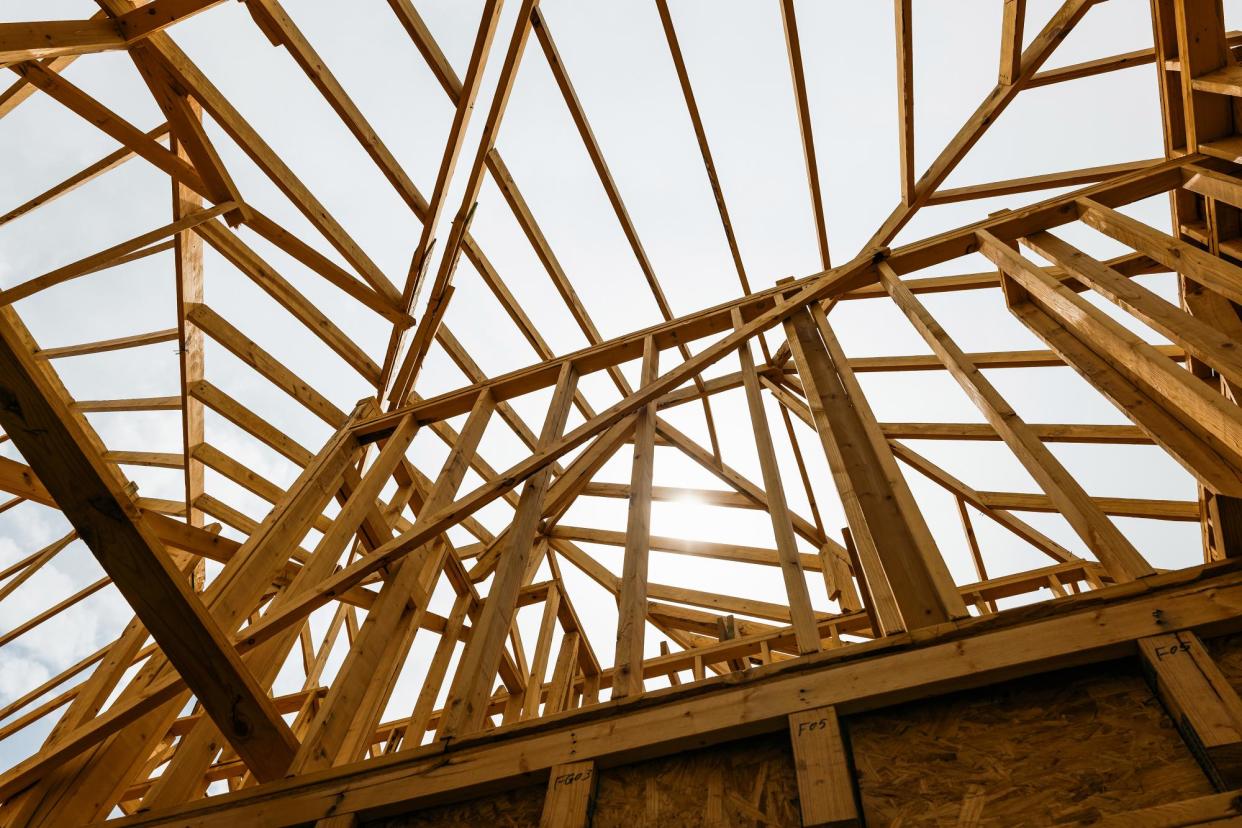‘Workers end up paying the price’: laborers call for safer building sites

- Oops!Something went wrong.Please try again later.
Wooden planks with nails covered the site where Antonio, a construction day laborer in Houston, Texas, was helping clear fencing last December. The contractor that hired him provided no protection, he said – so when he slipped, and a nail struck him just above the ankle, it became “really swollen”.
Related: ‘It has really gotten out of hand’: wage theft rampant in US construction
Antonio was given hydrogen peroxide, and the contractor promised to get him medical attention the next day. But after developing a fever overnight, and with his ankle still swollen, he took himself to the emergency room.
Upon arrival, he was told if he had waited much longer, doctors might have needed to amputate his leg below the knee. “I spent about 16 days in the hospital,” Antonio, who requested to omit his last name for fear of retaliation, said.
After two weeks, the contractor – which had not picked up the phone the day after his accident – got in touch. They wanted to know “if I was ready to work”, Antonio said.
His injury was never reported to the proper authorities. He has not received compensation.
The incident was not unusual.
More than 450,000 workers were injured by falls, slips and trips in 2021 and 2022, according to official data, with 865 fatalities recorded in 2022 alone. Of those who died, more than 400 were construction workers, according to the Center for Construction Research and Training.
Employers are required by the Occupational Safety and Health Administration (Osha) to protect workers from falls on the job, by providing guardrails, harnesses, scaffolding and personal safety gear when necessary, and provide training to workers.
A lot of workers don’t feel comfortable enough to say, ‘Hold on a second, that’s unsafe’
“Construction is a dangerous industry, but falls are preventable, 100%,” said Ryan Papariello, safety and health specialist at the Laborers’ Health and Safety Fund of North America. “We know how to prevent these incidents.”
But in many cases where injuries and fatalities of workers occur, basic Osha protections are not being followed, or implemented at all.
“Probably the most important to me is a general awareness of the job site, what’s going on around you, and the confidence to be able to stand up and say, ‘Stop, this is unsafe,’” said Anton Ruesing, executive director of the International Finishing Trades Institute. “A lot of workers don’t feel comfortable enough to say, ‘Hold on a second, that’s unsafe, and I’m not going to do that.’”
Antonio, for example, claimed he and other workers were not given proper breaks or enough water on the job, and had little recourse because if they speak up, they won’t be able to get work again.
“These contractors mislead you and lie about the job, they lie about the pay and end up paying less than the amount they promised,” he said. “They take advantage of us and that’s how they are lining their pockets, by abusing people like us.”
While Osha regularly issues citations and penalties in cases where a worker is killed on the job and safety protocols were not followed or implemented, its fines have been criticized as being too low to deter bad behavior by employers.
Legislation to modernize the federal agency in charge of protecting workers, including the expansion of its coverage to 24 states not currently covered, has stalled in Congress.
“Workers die and get injured when management basically fails to provide a safe workplace,” said Jessica Martinez, co-executive director of the National Council for Occupational Safety and Health. “Doing a job safely in construction and other industries requires time, money, management, attention and other resources. So when management decides not to spend that time, money and attention, then workers end up paying the price.”
“We’ve come a long way, but we still have a ways to go,” said Ruesing. “The fact that deaths and fatalities are figured into a job in terms of costs and insurance, it’s still disgusting.”
•••
Gabriel Strathern fell to his death while working on a roofing job in Raleigh, North Carolina. He was 29.
Osha fined his employer on the job, the roof and window cleaning firm Squeaky Clean, about $17,000 for failing to provide fall protection or sufficient safety training.
During separate legal proceedings, the owner of Squeaky Clean, James Crisp, was asked why he had not reported Strathern’s death to Osha. “I didn’t know that I was required to,” he said, according to a copy of a deposition obtained by the Guardian.
Devin Gilgor, Strathern’s father, said: “A month before, Gabriel had fallen off a roof, but hadn’t sustained any serious injuries and when he asked about reporting the incident to Osha, his employer told him, ‘We don’t do Osha.’
“They knew this house was very dangerous, because the roof pitch was at a peak angle and he still wasn’t given any fall protection equipment.”
Gilgor explained that he was the one who reported the incident to Osha the next day, and that to this day he has never received a phone call or apology from his son’s employer.
The fines paid by Squeaky Clean, and other employers found in breach of the rules, are not enough, according to Gilgor. “When a death or permanent disability occurs on the job, the ability of an employer to negotiate fines should not be an option,” he said. “Not only civil but criminal charges need to be pursued. Avoiding workplace accidents should be our main focus.
“Employers need to be made aware of Osha regulations. Employees need to be made aware of their rights to a safe work environment and Osha needs to come up with better ways to reach the workplace.”
Squeaky Clean and an attorney representing Crisp did not respond to multiple requests for comment.

